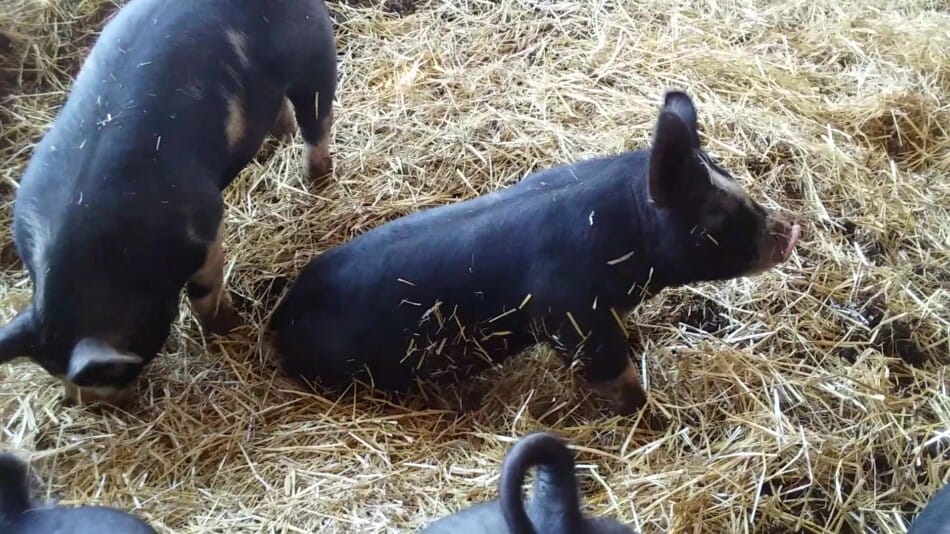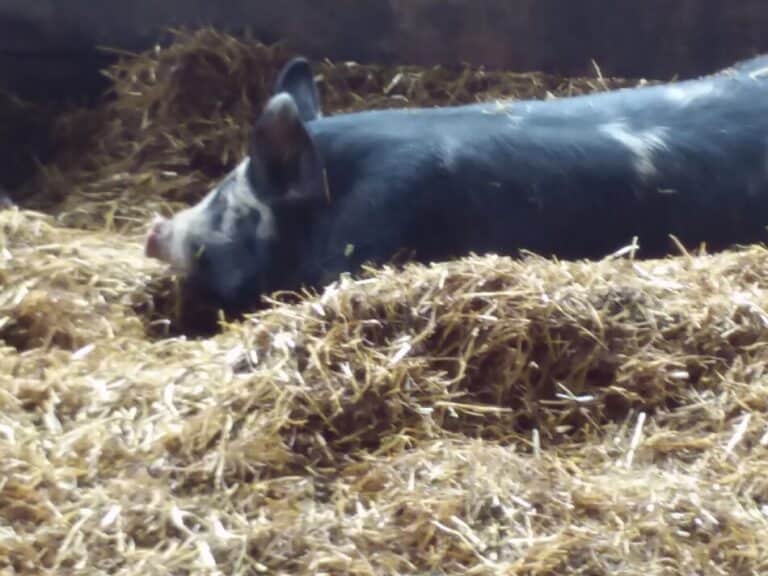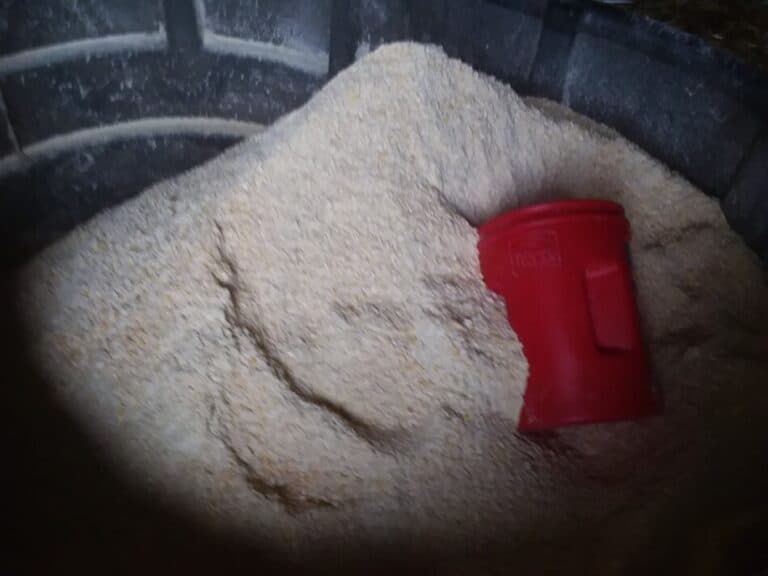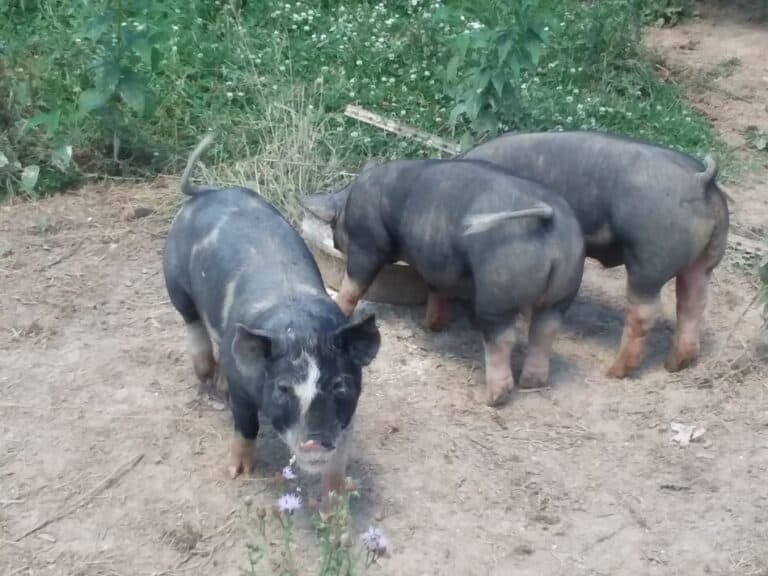How Long Does It Take To Raise A Pig For Slaughter?

Thinking about raising a few pigs this year? Good call, nothing is better than a freezer full of your own homegrown pork, especially when everyone else is scrambling to be at the meat counter when it finally stocks up again!
What are you getting yourself into, here? Now that you have decided that raising pigs may work for you, how long will it take to go from piglet to slaughter ready?
It will take 4-5 months to raise a pig from feeder pig size to a slaughter weight of 250-260 pounds. Starting with small feeder pigs (under 50 pounds), limiting feed or water, raising pastured or wooded pigs, or raising pigs to a high slaughter weight (300 pounds or higher) will take longer.
Is Raising Pigs For Meat Worth It? will walk you through all of the costs you need to consider when thinking about raising your own pork, from getting the feeder pigs to butchering costs.
4-5 months to grow a pig from feeder size to slaughter weight
It will take you 4-5 months to raise your pigs from feeder pig size up to slaughter weight.
If you start with bigger feeder pigs, more in the 50-60 pound range and want a slaughter weight of 250-260 you should be able to get your pigs up to the target weight in 4 months.
If you start with smaller feeder pigs, more in the 30-45 pound range, your pigs will take longer to grow, just because they started out smaller.
If you want to slaughter your pigs at a higher weight, more like 300 pounds or more, these pigs will also take longer to grow since you want to take them to a higher finished weight.
Read Is Your Pig Ready To Butcher? for specifics on how to tell if your pigs are finished and get a look at some pictures and a video of a few of mine that are butcher ready.
The fastest way to raise pigs in on free choice feed
In order to keep your pigs growing at their best, you’ll need to keep them on a free choice pig feed. This means they have all of the feed they want to eat any time they want to eat it.
Of course, to take advantage of the free choice feed, your porkers will also need plentiful water.
Sadly, having plenty of water available to pigs can get overlooked, to the detriment of the pig’s ability to grow. If you want your pigs to grow to their potential, free choice water is a must!
Best Feed Mix For Pigs goes over your feed options and which ones will work best for you.
Match the feed ration to the size of the pigs you have.
With most rations, the formulation will change slightly as the pig grows, usually to a less expensive mix since the ration will have a lower protein content.
Switching the ration when you can (according to the directions on the tag) will save you a bit on feed costs, while keeping the pig on track, growth wise.
Pigs on pasture or wooded areas will take longer
If you are planning to put your pigs out on pasture or into a wooded lot, meaning not in a pen, they are going to take longer to raise, simply because they are running around and burning up more energy.
I had two gilts out on pasture that just ran all over the place, those two were busy, busy! They were happy and in wonderful shape, but definitely not gaining the same as they would if they were in a pen.
How much longer will pasture or wooded pigs take? I would plan on at least a month and a half, maybe two months longer than if they are on full feed in a more controlled space.
This will really depend upon the genetics of the pigs you purchased.
If the piglets are from a farm that has been using grass or woods as a big portion of their pigs’ diet and the herd is adapted to it, then those piglets will grow more quickly than piglets from a farm that is keeping pigs on a bedded pack.
If you got a few piglets from a local small farmer, who uses bedded packs instead of pasture or woods, those piglets will need more time to grow, since they are not used to digesting forages.
Please note, I’m not trying to discourage outdoor pigs, not at all! I’m trying to help you get a better idea of what you can expect from your pigs, especially if you are trying to set up a processing appointment.
For more details on pastured pigs, consider reading Pigs On 5 Acres, which gives two grazing rotation plans, which can be scaled down or up.
Pigs of unusual breeds will take longer
The other group or category of feeder pigs that will take longer to grow are any sort of rare breed or cross of rare or unusual breeds of pigs.
This includes the smaller pigs, like American Guinea, and full size but less popular breeds, like Large Black.
While these two breeds are at the extreme opposite of the size range, they both will take longer to finish, more like a year.
Best Breed Of Pig To Raise For Meat goes into more detail on which breeds to pick and why.
About 10 years ago, we had a small herd of Tamworth pigs. I liked them and they were friendly! But they were also constantly running about on the pasture, seriously, so they took forever to make weight.
I realize that Tamworth isn’t all that unusual of a breed anymore (the same can be said for Gloucestershire Old Spot and Large Black, as well) but until they are more common, go with something else for your first year.
Choose a more commonly available pig, like a nice crossbred, just to get you started. Crossbred feeder pigs are going to be more affordable, more forgiving and easier to find in the first place!
Once you have a year or two experience, then you’ll be more suited to consider pigs that are a bit more challenging to raise.
If you are super interested in a rare breed, go for it with this caution: you are also taking on a set of pigs that will need a bit “extra”, most likely in the form of time to get to the target slaughter weight and will cost more to buy.
Here are the Top Eight Major Swine Breeds. This site shows a nice picture and gives a brief description of each breed. A cross of any of these pigs will be a great choice to start out with.




